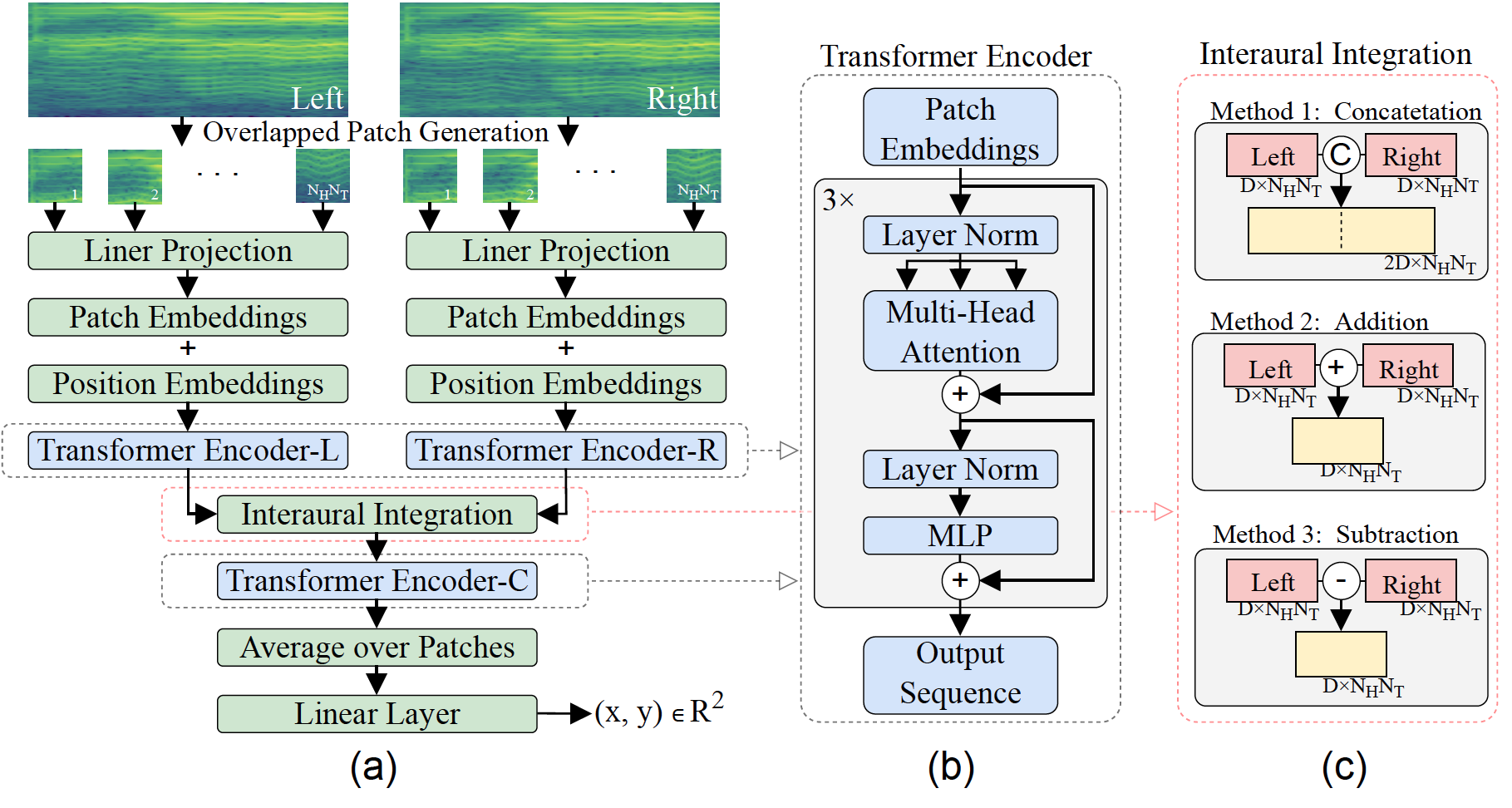BAST: Binaural Audio Spectrogram Transformer for Binaural Sound Localization
Accurate sound localization in a reverberation environment is essential for human auditory perception. Recently, Convolutional Neural Networks (CNNs) have been utilized to model the binaural human auditory pathway. However, CNN shows barriers in capturing the global acoustic features. To address this issue, we propose a novel end-to-end Binaural Audio Spectrogram Transformer (BAST) model to predict the sound azimuth in both anechoic and reverberation environments. Two modes of implementation, i.e. BAST-SP and BAST-NSP corresponding to BAST model with shared and non-shared parameters respectively, are explored. Our model with subtraction interaural integration and hybrid loss achieves an angular distance of 1.29 degrees and a Mean Square Error of 1e-3 at all azimuths, significantly surpassing CNN based model. The exploratory analysis of the BAST's performance on the left-right hemifields and anechoic and reverberation environments shows its generalization ability as well as the feasibility of binaural Transformers in sound localization. Furthermore, the analysis of the attention maps is provided to give additional insights on the interpretation of the localization process in a natural reverberant environment.
PDF Abstract
